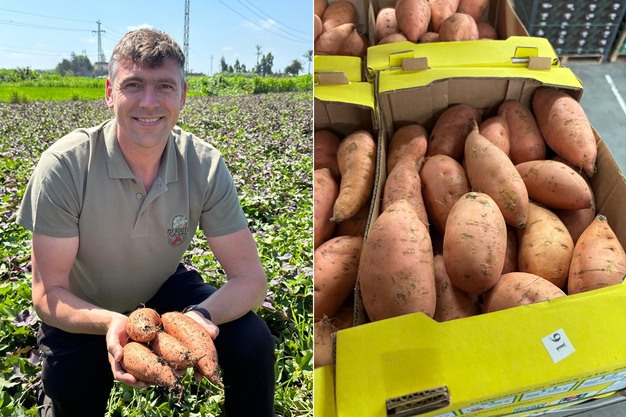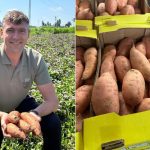“In Europe, sweet potato sales have only grown,” says Martin Oudenes of My Roots and More. This Dutch company imports and exports root vegetables, including many sweet potatoes. Martin sees European demand continuing to grow, both in the industry and wholesale for fresh consumption. The trader also sees that the meal kit category keeps gaining significant popularity. “Sweet potatoes are often included in, say, soup or curry kits.”
 © My roots & more
© My roots & more
Martin notes a shift in the market share of pricier cultivation areas from places like Spain and the United States to Egypt. This development is due to Egypt’s favorable location with short transit times, lower labor costs, and a stable water supply from the Nile. By investing in storage and curing, Egypt can limit skin damage and rot, enabling the country to supply almost year-round. Often, after about 100 days of growth, the tubers remain in the ground for some time until the optimal sales moment is reached.
The risk of rapid expansion is quality variation due to what Martin calls ‘cowboys’. He also sees a role for inspection in both Egypt and the Netherlands. My Roots and More works with regular shippers. “They know what the market wants, so our customers know they’re getting a good product. And, because there are always sweet potatoes, they’re involved in the planning,” says Oudenes.
 © My roots & more
© My roots & more
Dutch cultivation poses a minor hurdle to Martin. “Some growers are expanding, but several have already stopped because it’s hard to sell Dutch sweet potatoes to the industry. Compared to other production areas, the dry matter content is low, so processing yields are low, too.”
 © My roots & more
© My roots & more
Martin says Dutch sweet potatoes yield around 60% when processed, those from the US around 80%, with Egypt in between. “That’s not a major problem for the industry, because they’ll often pay a little more for potatoes with a higher processing yield. The main cost items are oil and labor, which means a lower yield per potato has relatively less impact on the total production process,” he says.
 © My roots & more
© My roots & more
Market prospects look good. “This growth is becoming increasingly apparent. Sweet potatoes are appearing more and more often in restaurants, which means consumers are also eating them more often at home. Also, manufacturers will probably increasingly focus on ready-to-eat products.”
“Plus, the health benefits are becoming clearer. Also, in Arab countries, many dishes are traditionally based on wheat, which is currently very expensive. There, sweet potato flour is being tested as a substitute. There are, thus, still many opportunities,” Martin concludes.
 Voor meer informatie:
Voor meer informatie:
Martin Oudenes
My Roots & More
Benedenheulseweg 3
2821 LR Stolwijk
Tel: +31 182717180
Mob: +31 622442981
[email protected]
www.myrootsandmore.nl
